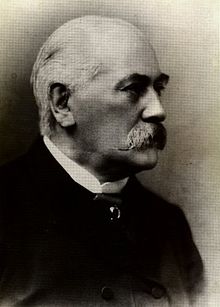Brugsch Papyrus

The Brugsch Papyrus (Pap. Berl. 3038), also known as the Greater Berlin Papyrus or simply Berlin Papyrus,Friedrich Wilhelm IV of Prussia acquired it in 1827 for the Berlin Museum, where it is still housed. The style of writing is that of the 19th Dynasty, and it is dated between 1350 and 1200 BC.
The papyrus was studied initially by Heinrich Karl Brugsch, but was translated and published by Walter Wreszinski in 1909. Only a German translation is available.
The papyrus contains twenty-four pages of writing. Much of it is parallel to the
: 37–38 Some historians believe that this papyrus was used by Galen in his writings.References
- ^ LCCN 95039770. Following Nunn, the Berlin Papyrus is "sometimes known as the Papyrus Brugsch" (p. 37).
Bibliography
External links
Wikimedia Commons has media related to Brugsch papyri.
